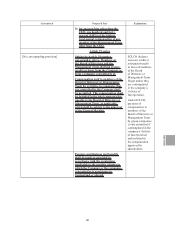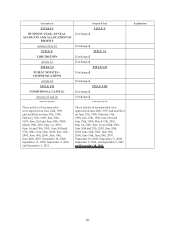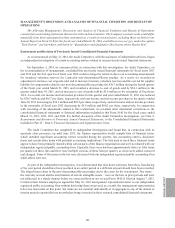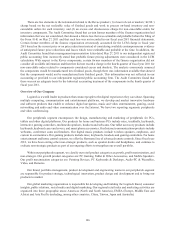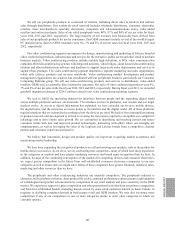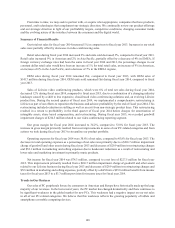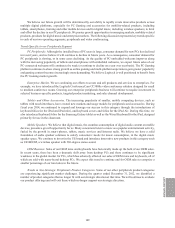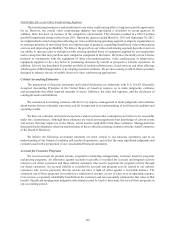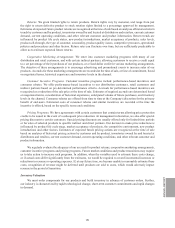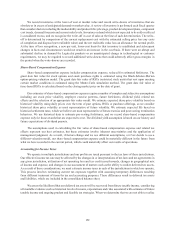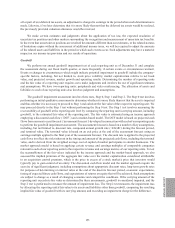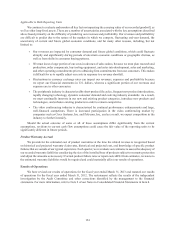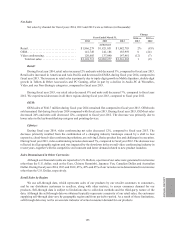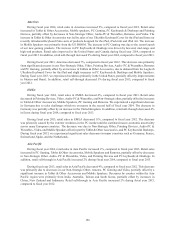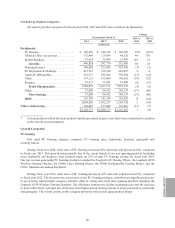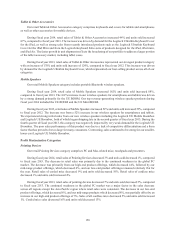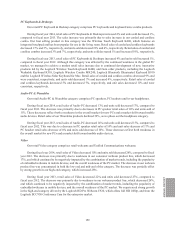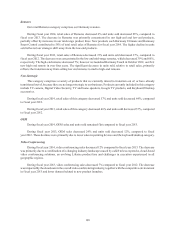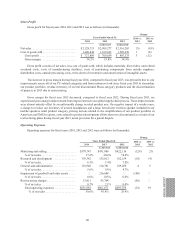Logitech 2014 Annual Report Download - page 167
Download and view the complete annual report
Please find page 167 of the 2014 Logitech annual report below. You can navigate through the pages in the report by either clicking on the pages listed below, or by using the keyword search tool below to find specific information within the annual report.
Returns. We grant limited rights to return products. Return rights vary by customer, and range from just
the right to return defective product to stock rotation rights limited to a percentage approved by management.
Estimates of expected future product returns are recognized at the time of sale based on analyses of historical return
trends by customer and by product, inventories owned by and located at distributors and retailers, current customer
demand, current operating conditions, and other relevant customer and product information. Return trends are
influenced by product life cycle status, new product introductions, market acceptance of products, sales levels,
product sell-through, the type of customer, seasonality, product quality issues, competitive pressures, operational
policies and procedures and other factors. Return rates can fluctuate over time, but are sufficiently predictable to
allow us to estimate expected future returns.
Cooperative Marketing Arrangements. We enter into customer marketing programs with many of our
distribution and retail customers, and with certain indirect partners, allowing customers to receive a credit equal
to a set percentage of their purchases of our products, or a fixed dollar credit for various marketing arrangements.
The objective of these arrangements is to encourage advertising and promotional events to increase sales of our
products. Accruals for these marketing arrangements are recorded at the time of sale, or time of commitment, based
on negotiated terms, historical experience and inventory levels in the channel.
Customer Incentive Programs. Customer incentive programs include performance-based incentives and
consumer rebates. We offer performance-based incentives to our distribution customers, retail customers and
indirect partners based on pre-determined performance criteria. Accruals for performance-based incentives are
recognized as a reduction of the sale price at the time of sale. Estimates of required accruals are determined based
on negotiated terms, consideration of historical experience, anticipated volume of future purchases, and inventory
levels in the channel. Consumer rebates are offered from time to time at the Company’s discretion for the primary
benefit of end-users. Estimated costs of consumer rebates and similar incentives are recorded at the time the
incentive is offered, based on the specific terms and conditions.
Pricing Programs. We have agreements with certain customers that contain terms allowing price protection
credits to be issued in the event of a subsequent price reduction. At management’s discretion, we also offer special
pricing discounts to certain customers. Special pricing discounts are usually offered only for limited time periods
or for sales of selected products to specific indirect and direct partners. Our decision to make price reductions is
influenced by product life cycle stage, market acceptance of products, the competitive environment, new product
introductions and other factors. Estimates of expected future pricing actions are recognized at the time of sale
based on analyses of historical pricing actions by customer and by product, inventories owned by and located at
distributors and retailers, current customer demand, current operating conditions, and other relevant customer and
product information.
We regularly evaluate the adequacy of our accruals for product returns, cooperative marketing arrangements,
customer incentive programs and pricing programs. Future market conditions and product transitions may require
us to take action to increase such programs. In addition, when the variables used to estimate these costs change,
or if actual costs differ significantly from the estimates, we would be required to record incremental increases or
reductions to revenue or operating expenses. If, at any future time, we become unable to reasonably estimate these
costs, recognition of revenue might be deferred until products are sold to users, which would adversely impact
revenue in the period of transition.
Inventory Valuation
We must order components for our products and build inventory in advance of customer orders. Further,
our industry is characterized by rapid technological change, short-term customer commitments and rapid changes
in demand.
ANNUAl REPORT
151


